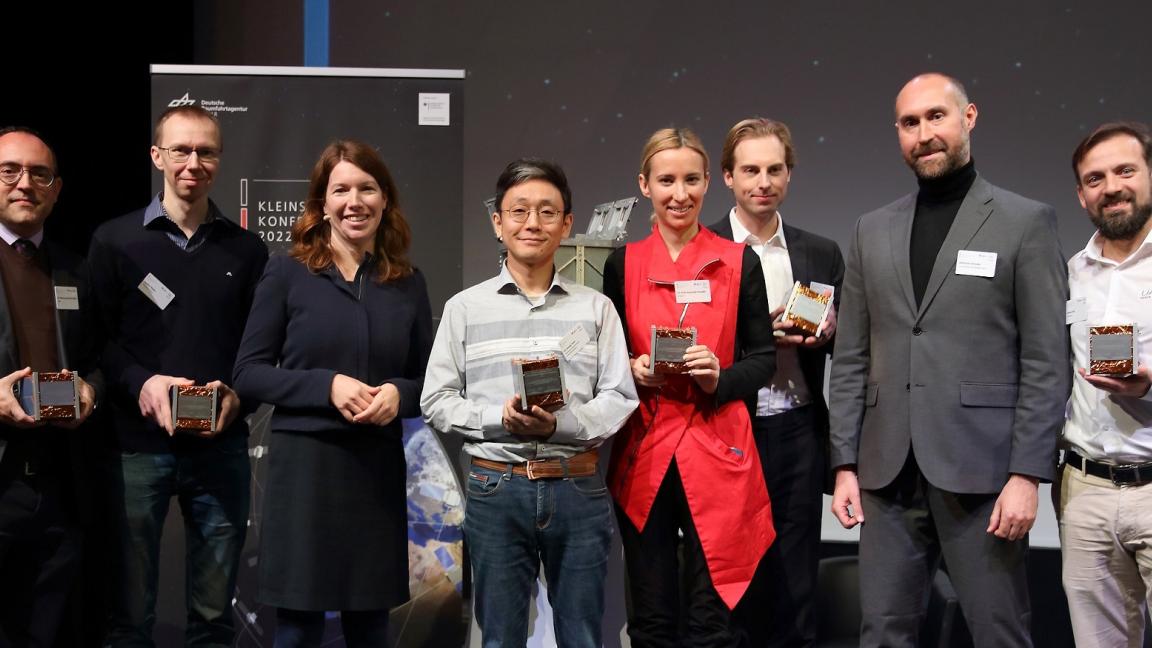The KvarkenSat, developed in the KvarkenSpaceEco cross-border project, will be launched into orbit on the second flight of Isar Aerospace Technologies’ Spectrum microlauncher, scheduled for either 2023 or 2024.
– Our team created a complicated cube satellite mission and worked hard at it for the past two years. To think DLR rated our process this high, alongside the other EU missions in the competition is very satisfying to us, says Kendall Rutledge, project manager of KvarkenSpaceEco at the University of Vaasa.
The construction and testing of the KvarkenSat small satellite will continue at the Luleå University of Technology and the Swedish Space Physics Institute in Kiruna. The satellite's completion schedule is well in line with the schedule planned for the second flight of the Spectrum microlauncher.
Jaakko Yliaho, doctoral researcher and laboratory engineer at the University of Vaasa, attended the small satellite conference in Berlin and accepted the award on behalf of the satellite's future owner, the University of Vaasa.
– The opportunity to get a free launch is of great importance, but it was also interesting to talk to other satellite builders that were awarded in the competition.
Technological advancement and testing of new technologies as selection criteria
The free launch prize was a part of the German Space Agency's Microlauncher Competition, which aims to promote the commercialisation of European space activities as well as to improve the competitiveness of companies and research institutes in the field. During the programme, two German companies, Isar Aerospace Technologies and Rocket Factory Augsburg, developed micro launchers, which are small-sized launch rockets that transport small satellites into space.
The first two flights of both Isar Aerospace Technologies and Rocket Factory Augsburg will be filled with small satellites chosen by the German Space Agency and designed by European research institutes and small companies. The selection criteria include the advancement of the satellite's payload, i.e. the technology packed into the satellite, and the testing of new technologies. The German Space Agency, which implements the space strategy of the Federal Republic of Germany, is a part of the German Aerospace Center (Deutsches Zentrum für Luft- und Raumfahrt, DLR).
Photo: Competition winners, photo: DLR
